A key challenge involved in organising outdoor events in Ireland is the weather. It is often said that in Ireland we don’t have a climate, we have weather. If it rains, you cannot hold a biodiversity event looking for moths and butterflies outside. You cannot have a butterfly walk without butterflies unless one can conjure them into being for the nature lovers attending the walks. The weather forecast for Saturday did not inspire confidence, only apprehension. A great suspicion arises when you see wall-to-wall sunshine and clear blue skies in Ireland at 7 am. It is typically a cruel trick to lull you into optimism.
By 9 am it had clouded over and at 9:30 am my windscreen showed a spray of rain. Amazingly, it got better after that. When I arrived at our meeting point, four people were already there and another 11 appeared before 10 am, so my confidence in the weather obliging us increased. We even saw sunshine, occasionally, and that was enough to bring butterflies, moths and the region’s legion of dragonflies into the air.
It is reassuring to see the expected species. Our outing was treated to plenty of Marsh Fritillaries, in Lullybeg, none in Lullymore. The butterfly appears to have vacated Lullymore West, although we did find a single pupa.* Before alarm bells ring, the Marsh Fritillary is famous for moving around a landscape, with colonies thriving in one area for some time and then moving elsewhere within a region. The habitat in Lullymore West remains suitable, but some attention is needed to prevent the increase in rank grass becoming a major survival challenge. That underlines the need for landscape-scale protection and management for the Marsh Fritillary.
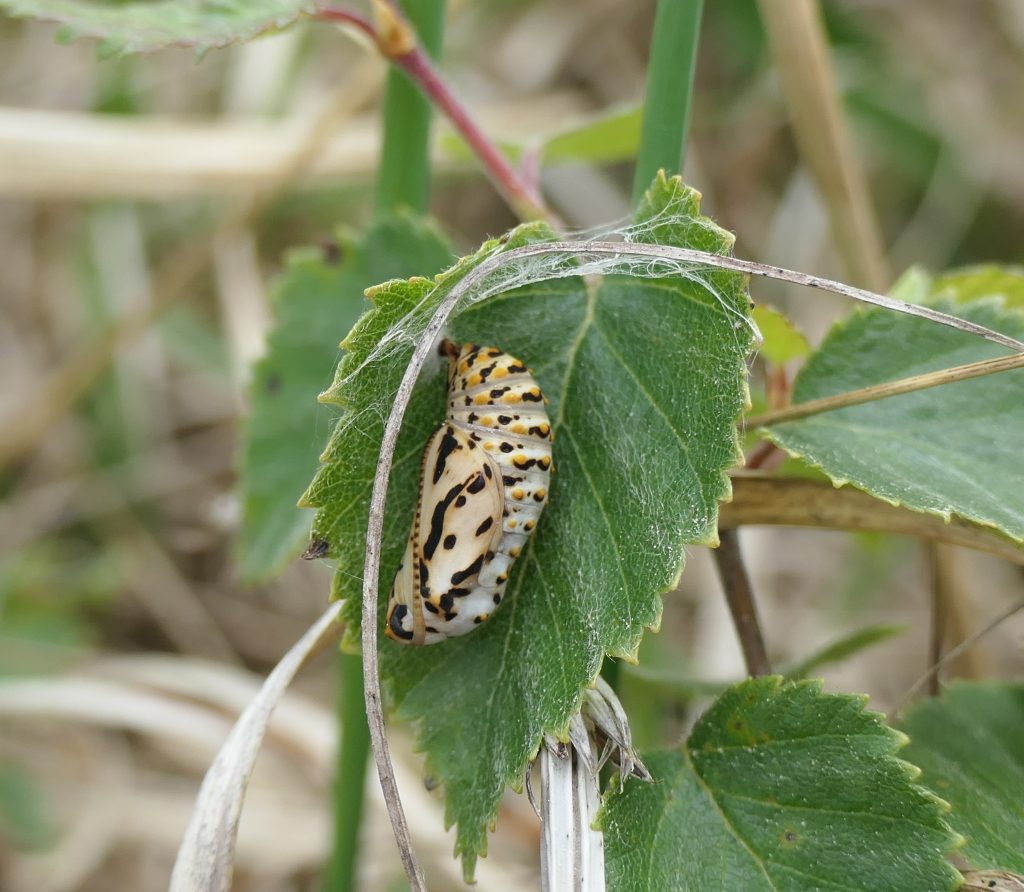
Our walk had the benefit of sharp-eyed children, who, having keener eyes closer to the ground, are better adapted to spot insect life! That’s my excuse anyway!
Meeting children aged four to eight who know far more about nature than I did then is inspiring and reassuring; there is hope for the future. The energy the children brought to our event and their wonder helped make the hard graft of conservation work worth the effort. One child opined that the underside of the Marsh Fritillary is nicer than the upperside. She was excellent at catching the butterfly and gingerly holding it by the thorax, which avoids hurting the butterfly. At her age, many are the poor butterfly seized by whichever body part my greedy fingers grasped!
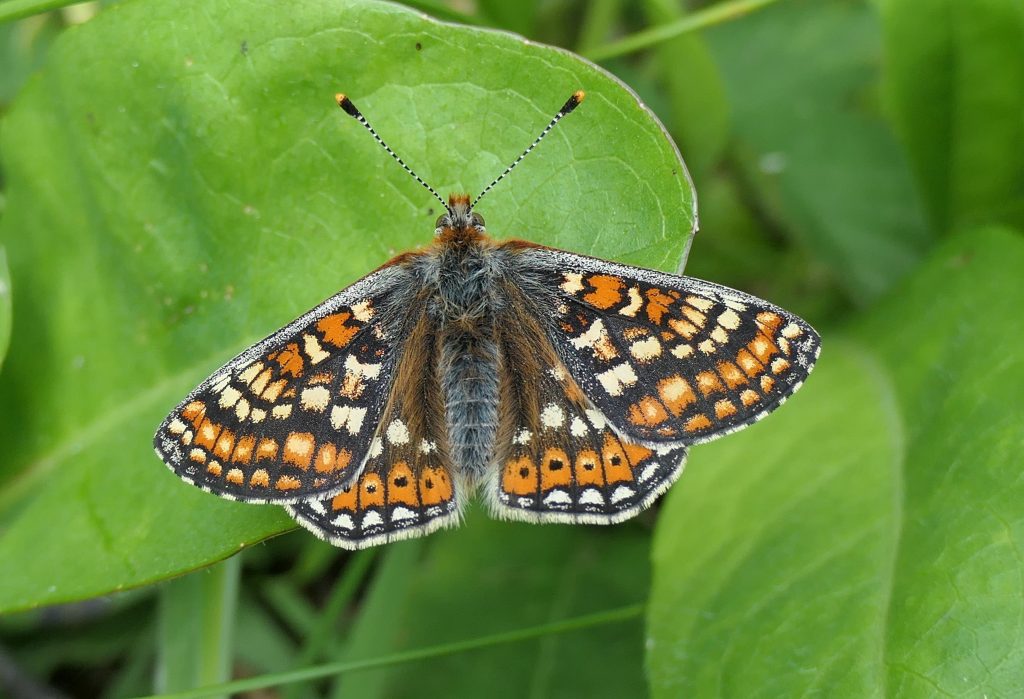
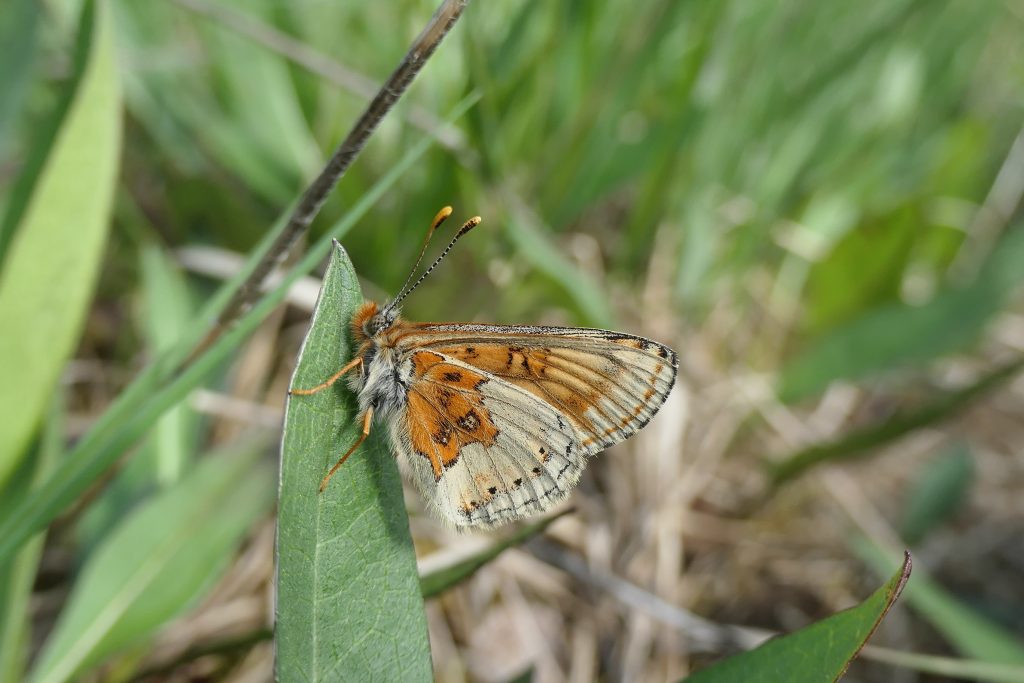
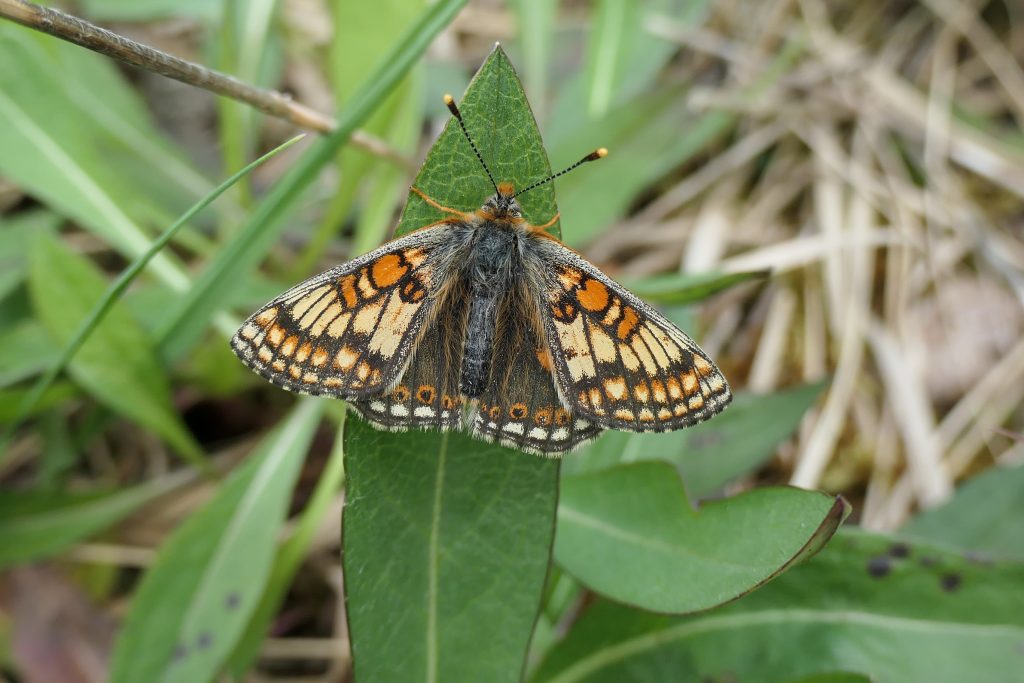
One child required caterpillars. I was glad the Brimstone larvae were available on the two buckthorn species in Lullybeg. These were all very small, smaller than they were this time last year.
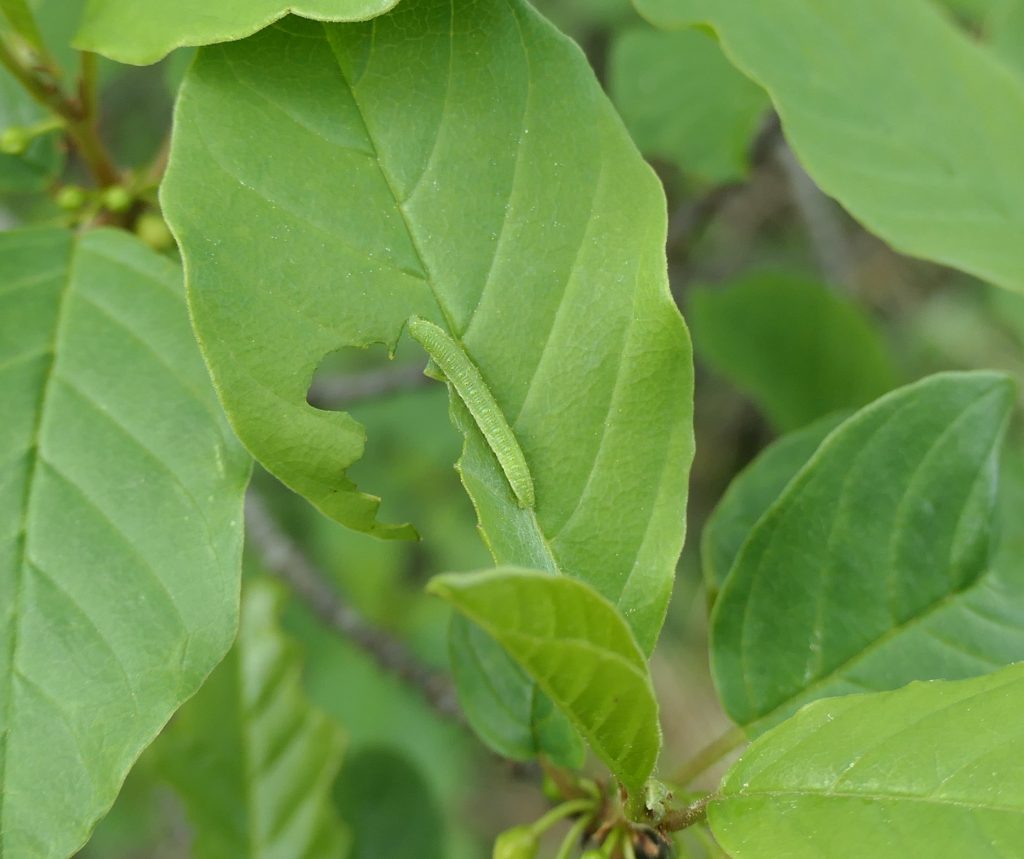
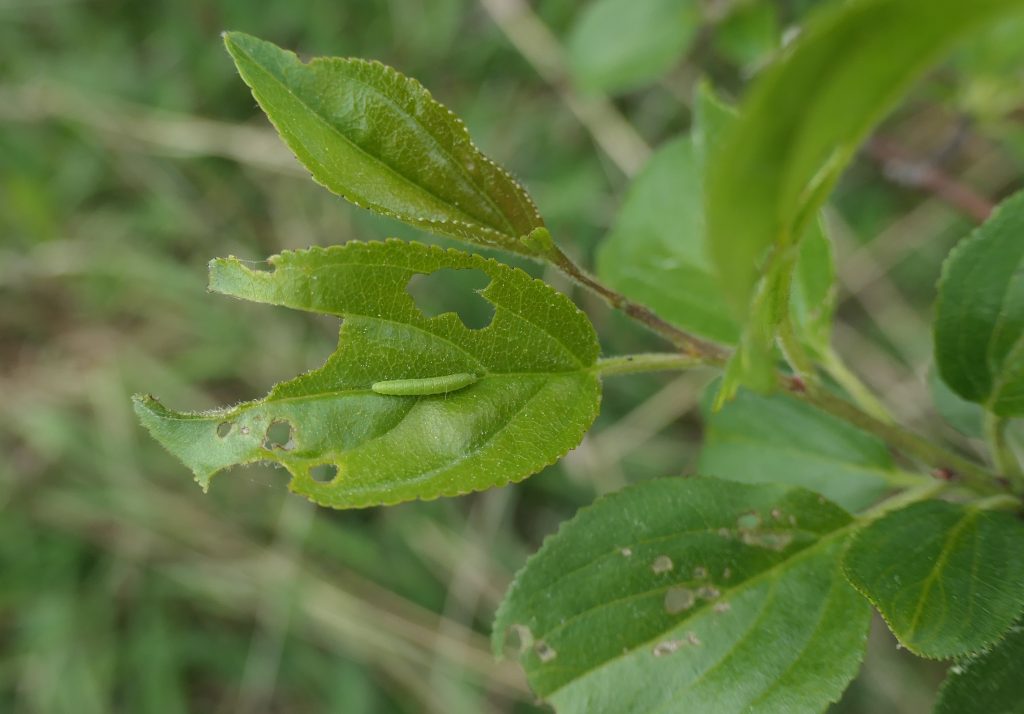
Frogs were common enough to add excitement. We also encountered a couple of Song Thrush anvils, hard ground or branches on which snail shells were broken to obtain their succulent contents. We netted Four-spotted Chaser and Hairy Dragonflies. I was bitten by both species, understandably. No dragonfly wants to be handled by a human. Plenty of blue damselflies glided about, glowing in the bright light. One of them fell victim to a Four-spotted Chaser.
Dingy Skipper, Cryptic Wood White, Green-veined White, Orange-tip, Small Copper, Common Blue, Holly Blue, Marsh Fritillary and Speckled Wood were ticked off, while Narrow-bordered Bee Hawkmoth (surely designed to impress anyone who sees it), Burnet Companion, Angle Shades and Silver Y were among the moths registered. We did not manage a Small Purple-barred moth, but it was probably not sunny for long enough to coax it to fly.
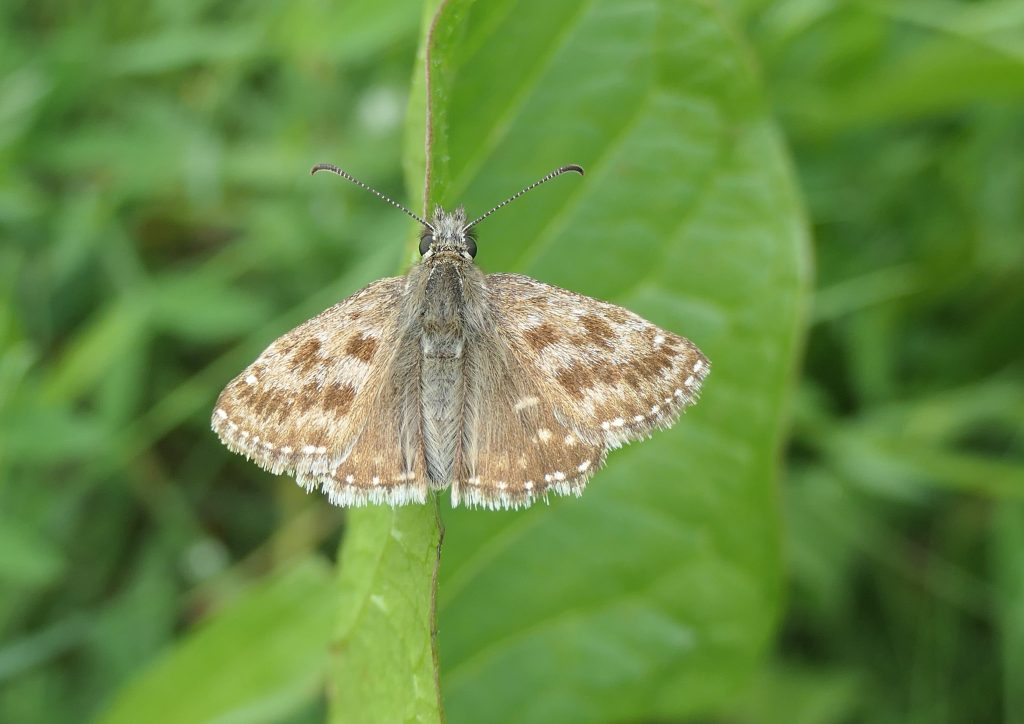
Overall, it was a wonderful day out. Our three German visitors enjoyed the event, and it is always great to have a chance to showcase the best of what Ireland’s biodiverse landscapes have to offer to our overseas visitors and natives alike. Biodiversity continues to boom in the Ballydermot region. Long may it be so.
*Since this post was published, we have been informed by the Irish Peatlands Conservation Council, which owns and carefully manages the reserve in Lullymore West, that the Marsh Fritillary has been recorded on the reserve in the past two weeks while carrying out their transect walks for the Irish Butterfly Monitoring Scheme.
Updated on 29 May 2024


Sounds magnificent; I too am heartened by the interest of youngsters, here’s hoping it flows into adulthood 😉